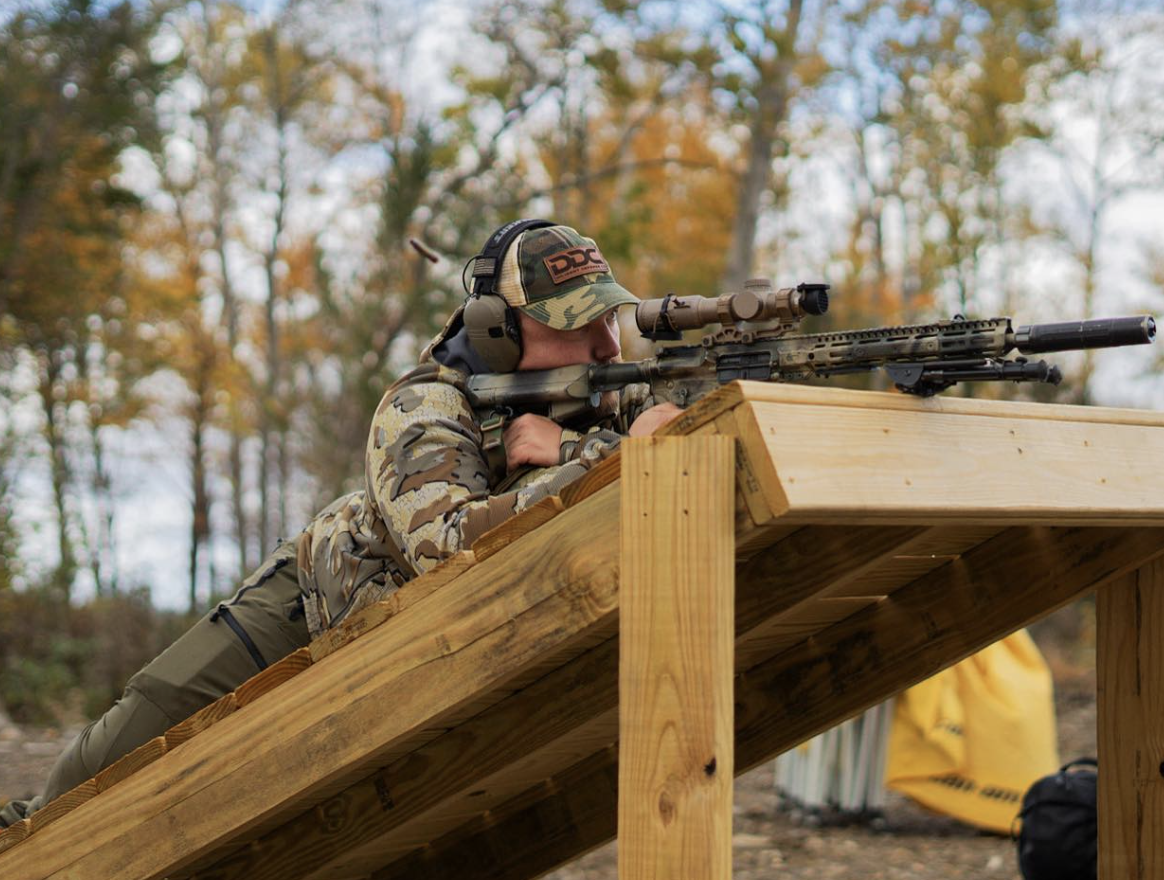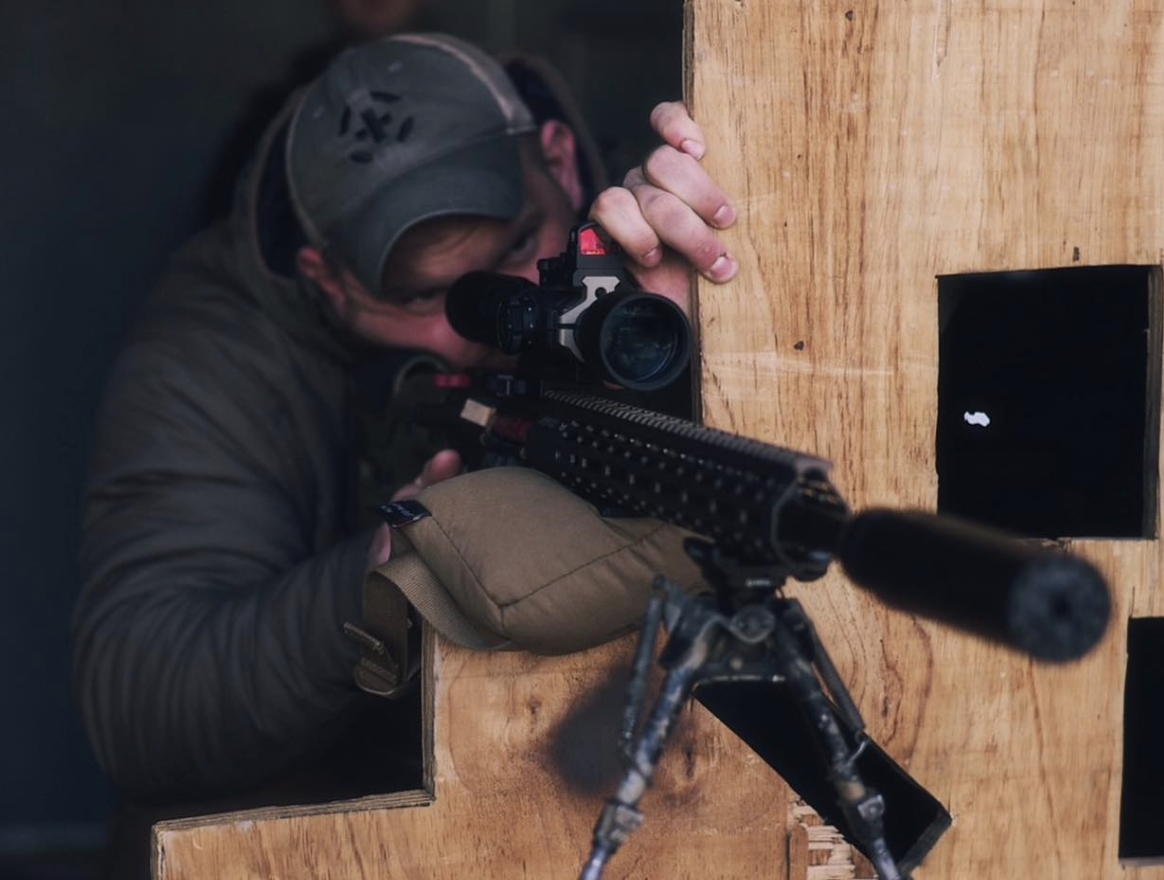The Complete Guide to LPVOs
The ultimate guide to low powered variable optics
Alright, so you’re in the market for some glass to throw on to your rifle but have no idea which of the million optics to choose from. Typically, with our informational content, we like to discuss the contexts in which we need certain items or pieces of equipment and tactical gear, but for the sake of this one, we will skip right into how to select an LPVO rather than whether or not an LPVO is the right option for you.
As it pertains to LPVO selection, we have a few pieces of criteria that an optic must meet before we even dive into the reviews and research on its reliability and durability. We will be discussing the following criteria in (digestible) detail:
Focal plane
Reticle
Magnification
That being said, let’s dive into all things involving LPVO selection.
Focal Planes when considering an lpvo
There are a two different types of focal planes to take into consideration, those are FFP and SFP.
FFP (First / Front Focal Plane) optics – When the optic is on your rifle and you are playing with it, the reticle grows or shrinks as you zoom in or out. The measurement tools within the reticle can be used effectively at any magnification setting. This is useful on optics with higher magnification or on a weapon system capable of accurately engaging at both intermediate and long ranges, but is not ideal for engagements in close quarters.
SFP (Second Focal Plane) optics have a reticle that can only be used to measure objects and apply DOPE at a specific magnification (usually the highest magnification). While this may seem completely useless, they are typically more cost-effective and not much of a hindrance on an LPVO because most users end up using the highest setting when they need to magnify their optic at all. Additionally, they typically have a better illumination setting.
Which do we prefer for an LPVO? FFP is our favorite, and there are great FFP LPVO options on the market, however, different users can afford different options. This is one criterion that we can be flexible on when considering an optic for something such as a 5.56 carbine class rifle, like an AR platform.
Selecting a reticle for your lpvo
It is our professional opinion that a Mil Reticle is the best option for most users, whether you have been in the armed forces or are a civilian. While it does require a little learning and knowledge, it provides a higher level of accuracy than a BDC, or bullet-drop-compensator reticle will. Now let’s get into the why for that.
The issue with BDC reticles is simple, they’re calibrated for a trajectory calculated based on a specific round, fired out of a certain barrel length with a certain twist rate, at a specific velocity, in a specific temperature range, at a specific altitude; change the ammunition type, you’re losing accuracy, shoot on a cold day versus a hot day, you lose accuracy, you get the picture. Yes, a BDC reticle can be used effectively, however, odds are you will end up having to learn holds anyway, only now with less precise reference points.
The place BDC reticles shine the most is in an organization with a common rifle and ammo type (i.e. the military), outside of that, it’s only really giving you ballpark holds. Long story short, if you know yourself to be someone who has no interest in taking the time to learn ballistics and accurate holdovers, the BDC may be up your alley. However, you will still need to be able to accurately estimate the distance to the target to use it effectively.
The benefit to Mil Reticles is you’re able to develop DOPE (data on previous engagements) to your specific rifle, ammo, etc. Establishing a quality zero and truing your optic at a set range (dependent on your ammo type and velocity) will provide much more precise holds at every range, as well as units of measure for accurate and faster follow-up shots.
Now that we’ve established why BDC reticles are so limited, let’s quickly clear up the difference between Mils and MOA, as you’ll see magnified optics listed as one or the other. (Make sure the optic you buy is Mil/Mil or MOA/MOA, this means the turret adjusts in the same increments as the marks in your reticle represent!) To summarize, the mil reticle (in any number of flavors) affords greater accuracy but will take a true student’s mindset to master. Employing principles like max point-blank range and quick drop can make a mil reticle as versatile and fast (even faster within a given range) as a BDC with the added benefit of being as accurate as the weapon platform allows.
Milliradians, or mils, are a unit of measurement. 1 mil for every 100M is 3.6”, so at 1000M (or 1 KM) 1 mil is 36”. Simple enough right?
MOA, or “minute of angle” equals 1” at 100 Yards 1.047” (but we also simply round it to 1” per 100) making 1 MOA 10” at 1000.
Whether you choose to work in MILS or MOA and Yards or Meters is entirely up to you. You’ll find most hunters using MOA and yards, while a lot from the military and PRS community use MILs and meters. What’s most important is your ability to apply your DOPE and effectively engage targets.
Wind Dots:
There are numerous reticles that feature dots or a “Christmas tree” style reticle. Some tree reticles have a simple grid layout, usually spaced in mils or half-mil sub-tensions. Others, however, have a true wind relation dot incorporated into the reticle, the first of which was the TReMoR. In these cases, with a little up-front calculation, the user can determine what wind speed value each dot represents (on most .308s this is usually 4mph) and then simply hold into the wind left and right with the corresponding elevation hold. This has the added benefit of being a great solution to leading moving targets, as most military (bipedal) targets walk at a speed of ~ 4mph and sprint at a speed of ~8-10 mph.
The downside to wind dots and “tree” reticles in general is that they can seem cluttered to shooters who aren’t used to that much going on in their scopes. At the end of the day, it comes down to shooter preference. Some shooters find significant value in the added information, while others prefer less obstruction.
Magnification when selecting an lpvo
1-4? 1-6? 1-8? 1-10?
We’re proponents of a 1-6 minimum. The reality is, PID (positive identification) and low percentage shots are real problems to tackle in the real world. The better picture we have, the more accurate and effective we can be. If a shooter is considering a 1-4 optic, it may be better to go with a red dot and a magnifier.
It is often said as a rule of thumb that we want 1x per 100M we plan to engage. While this is effective for bipedal animal-sized targets, more magnification means a better chance at positive identification of whatever it is we are about to engage. I personally find that 6x is “enough” on a 5.56 carbine, with 8x being preferred. 8x being the absolute minimum on a .308, with 10x + preferred (getting into MPVO territory now). For precise shooting, one benefit of higher magnification (8x or more) is that it can help in spotting misses. Since LPVOs don’t typically come with a parallax adjustment (focus), that means that it can be difficult to spot misses at 6x near the maximum effective range of 5.56 (about 550 meters for most rounds)
Another concern is the optics true magnification at its 1x setting. To be truly versatile, a good LPVO should have its lowest setting be as close to true 1x as possible. This will vary depending on several factors, including objective lens size/shape, the overall size of the optic, and more. This can be tweaked -in some cases to near perfection- with the ocular focus however, it is a concern. In our experience, higher-quality optics seem to have the market cornered in this respect, but at a higher cost.
In summation, we can narrow down the number of optics worth researching / testing for durability, reliability, glass clarity and glass transmission to the following options:
Swamp Fox Arrowhead LPVO Series $439
Primary Arms 1-8 ACSS Griffin X Mil Reticle $480
Primary Arms 1-6 FFP ACSS Griffin M6 Reticle $600
US Optics TS 1-8x24 MS2 Reticle $695
Strike Eagle 1-8 MRAD FFP $800
Viper PST 1-6x24 $900
Freebie: DOPE Cards
Odds are at this point, you’re ready to get a mil reticle and get to studying and smashing targets at distance.
As a quick reminder, “DOPE” is an acronym for Data on Previous Engagements. In a simple explanation, these are the holds applied at any range that allowed for a successful hit on your target. For example, attached is a simple DOPE chart with the holds for my AR-10 chamber in .308.
As far as building one goes, the easiest and fastest way to get a ballpark is by using a ballistics app such as BallisticsArc, ABMobile, etc. Within many of those apps, you can input data to “true” your velocity. Do this by applying the initial DOPE given and confirming its effectiveness on a target, then input the actual hold you used into the calculator as well as the range you engaged at (500M - 700M is generally a good ballpark without getting too into the weeds on this). By inputting this data, the calculator can produce a better estimate of your muzzle velocity without a chronograph, therefore producing more accurate holds for your DOPE card.
TRAINING
All that being said, trying to teach yourself all about LPVOs and learning the ropes out in the field can be pretty difficult, which is why we suggest finding a good training course to learn how to do it. Scoped Carbine Training is largely important, as it helps to get you used to your LPVO. If you do not train with it and familiarize yourself with your gear, then it will feel foreign when it comes time to use it.
If you are looking for other training courses to get used to your body armor then check out Core Vision Training. Whether you want medical or close quarters, or even some night vision courses, Core Vision Training has it all. In order to be a well rounded individual that knows how to survive and win in multiple different environments, scenarios, and more, then these courses could be your new best friends.
LPVO selection Wrap Up
Overall selecting an LPVO is not the easiest task in the world, as there is a lot that goes into it such as magnification, reticle, and focal plane, and you do not want to just go with the cheapest option. When it comes to your gear, whether that be night vision goggles or something a bit simpler like a plate carrier, you always want to do your research, and optics such as LPVOs are not different.
Will you be selecting an LPVO anytime soon?
Check out Core Vision Training’s shop, Instagram, and other blogs!
Written by Ken D. & Kyle C.



